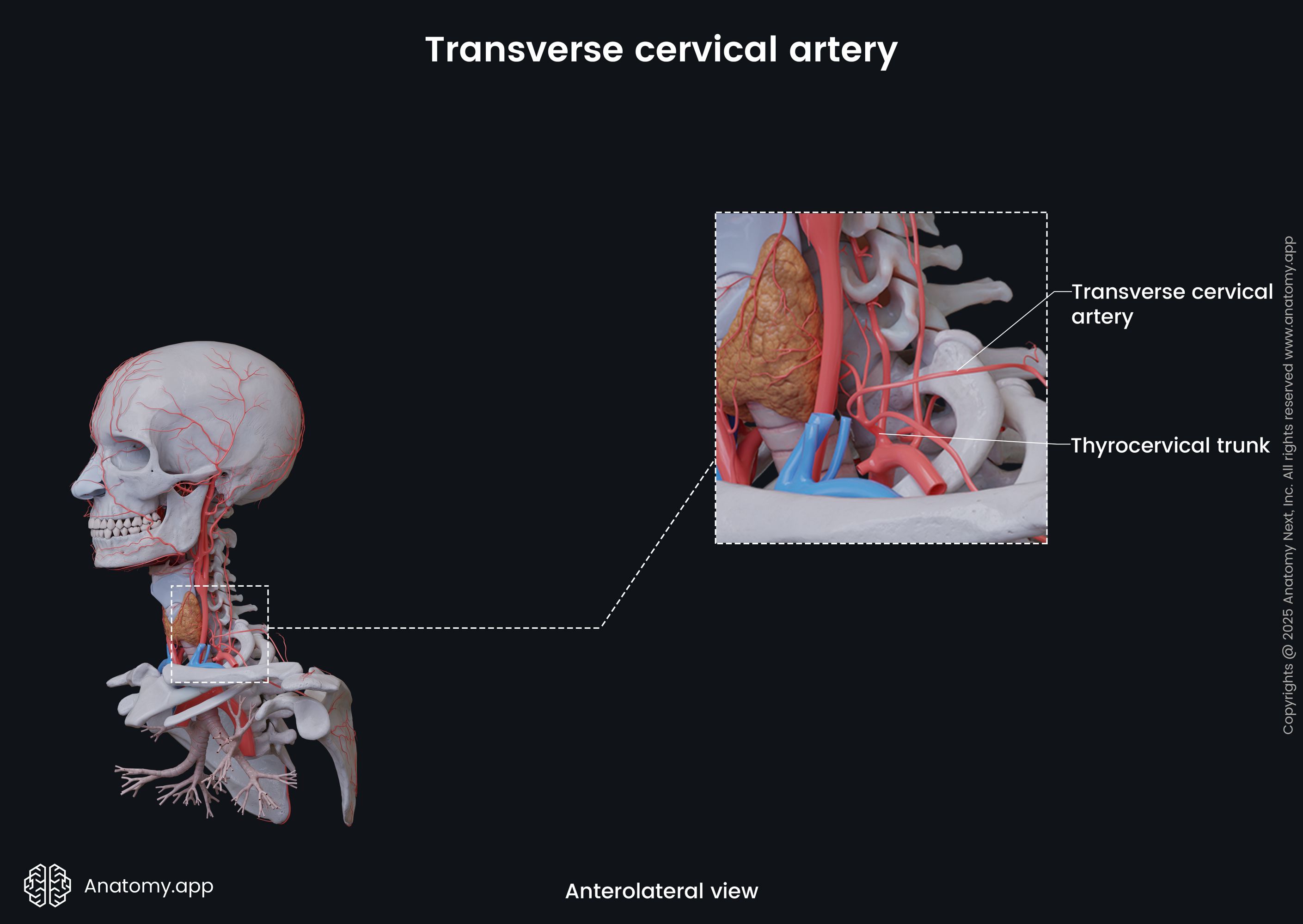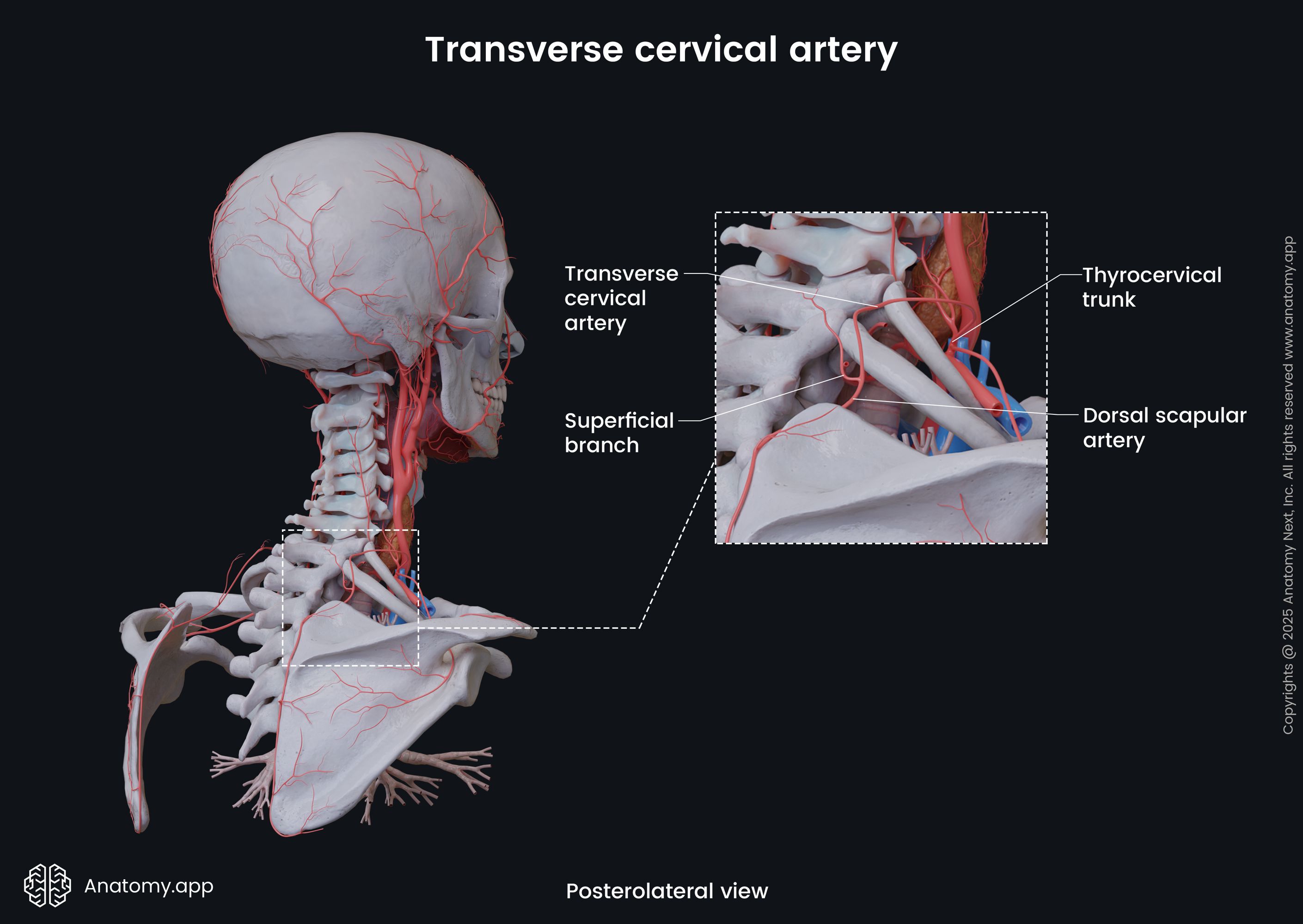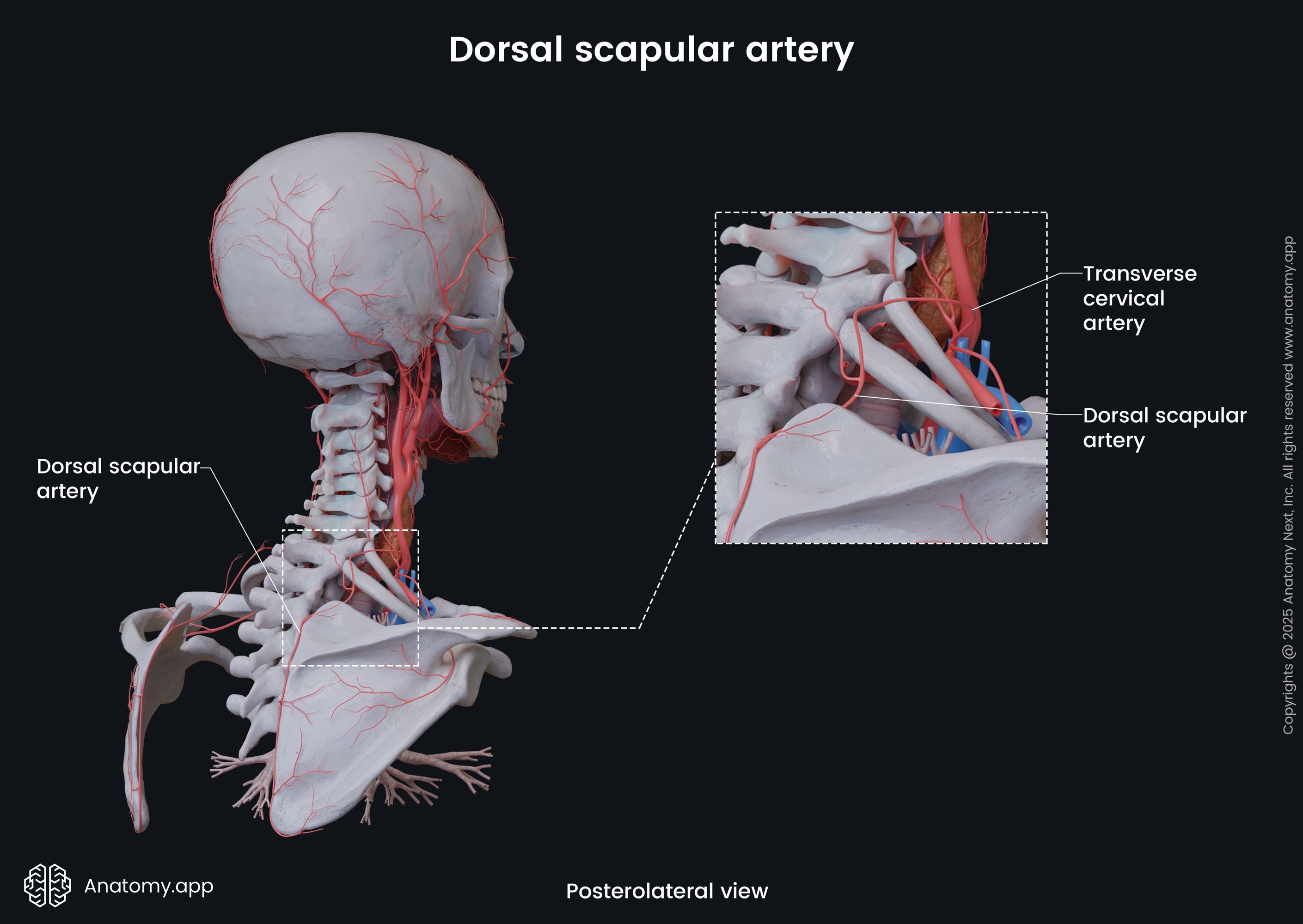- Anatomical terminology
- Skeletal system
- Joints
- Muscles
- Heart
- Blood vessels
- Blood vessels of systemic circulation
- Aorta
- Blood vessels of head and neck
- Arteries of head and neck
- Veins of head and neck
- Blood vessels of upper limb
- Blood vessels of thorax
- Blood vessels of abdomen
- Blood vessels of pelvis and lower limb
- Blood vessels of systemic circulation
- Lymphatic system
- Nervous system
- Respiratory system
- Digestive system
- Urinary system
- Female reproductive system
- Male reproductive system
- Endocrine glands
- Eye
- Ear
Transverse cervical artery
The transverse cervical artery (also called transverse artery of the neck, Latin: arteria transversa colli) is a branch of the thyrocervical trunk that supplies the superficial muscles of the neck and upper back.

The transverse cervical artery arises in the interscalene triangle, passes posteriorly through the brachial plexus to the levator scapulae muscle, where it divides into terminal branches:
- Superficial branch of the transverse cervical artery (also known as superficial cervical artery) - supplies the superficial muscles of the posterior part of the neck;
- Deep branch (also called dorsal scapular artery) descends along the medial border of the scapula and supplies the superficial muscles of the back.

Dorsal scapular artery
The dorsal scapular artery (Latin: arteria dorsalis scapulae) is considered to be the deep branch of the transverse cervical artery, while in some literature it has been described as one of the direct branches of the subclavian artery.
The dorsal scapular artery runs laterally to the brachial plexus, deep to the levator scapulae and reaches the superior scapular angle. The artery supplies superficial muscles of the back, including the levator scapulae, latissimus dorsi, trapezius, and the rhomboid muscles.
